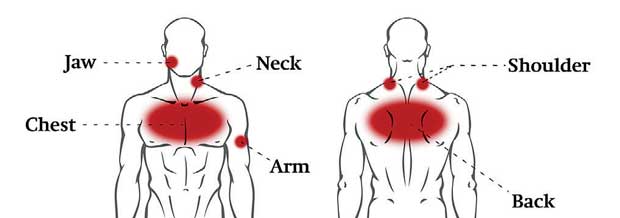08 Dec 2017 - {{hitsCtrl.values.hits}}
Angina and Ischemia
 Angina and Ischemia are two common terms we often come across in the specialized branch of medicine known as Cardiology-study of heart. However, people use these terms interchangeably during many instances due to a lack of clear knowledge about what they refer to.
Angina and Ischemia are two common terms we often come across in the specialized branch of medicine known as Cardiology-study of heart. However, people use these terms interchangeably during many instances due to a lack of clear knowledge about what they refer to.
From this article we are going to identify what each condition is and how they differ from one another.
Angina is a symptom which is defined as a chest pain, occurring due to the lack of blood supply to the heart muscles. It usually follows a hardening or narrowing of the coronary arteries which are responsible in maintaining the perfusion of heart muscle.
Blood supply to the heart is mainly done by two large arteries known as coronary arteries. In patients with long term dyslipidemia, cholesterol and fatty deposits can get accumulated on arterial walls by the process known as atherosclerosis.
 Symptoms
Symptoms
This pain is usually described as a heavy discomfort, dullness or tightness in the chest which could sometimes radiate along the left arm, neck, jaw or back. Some individuals can also present with,
Sometimes there can only be one or few of the above symptoms without any associated chest pain.
Angina can get triggered by strenuous activities or emotional disturbances like stress and typically lasts only for a few minutes.
There are two sub categories of angina known as stable and unstable angina.
Stable Angina- Exacerbates on strenuous physical activity, emotional stress and less commonly followed by heavy meals or exposure to cold weather. Associated symptoms usually improves after few minutes on rest.
Unstable Angina- This is the most unpredictable form of angina which can develop without any obvious trigger, even during rest. An episode will last longer than that of a stable angina and doesn’t respond to stable angina treatments.
Ischemia
Ischemia is defined as the pathology which is caused by a reduction of blood and oxygen supply to a certain area in the body. When this occurs in the cardiac muscle, it can result in what is known as Myocardial infarction, where the blood supply is cut off until the cardiac muscle dies in an irreversible manner.
Ischemia, itself is not a life threatening condition unless it causes the above mentioned Myocardial infarction.
Most patients who are prone to get ischemia are suffering from underlying diseases like atherosclerosis where the heart muscle can compensate the inadequate blood supply at rest. But if an exertion occurs following physical activity it will no longer be able to function properly, giving rise to a permanent muscle death.
Chronic Ischemia- When coronary arteries get weakened beyond a certain limit, the heart muscle tends to receive a lesser blood supply even during rest. This is quite dangerous resulting in a progressive heart damage.

Summary
23 Dec 2024 2 hours ago
23 Dec 2024 2 hours ago
23 Dec 2024 2 hours ago
23 Dec 2024 3 hours ago
23 Dec 2024 4 hours ago